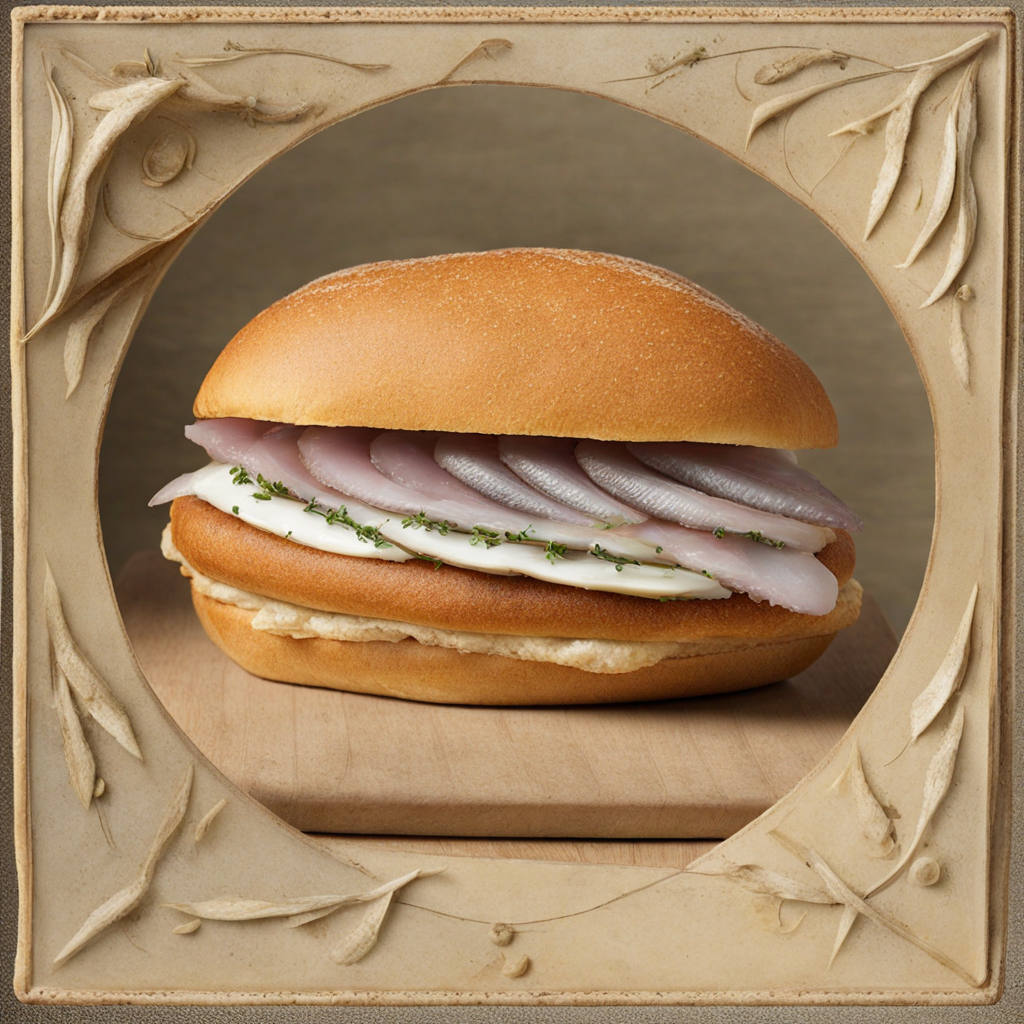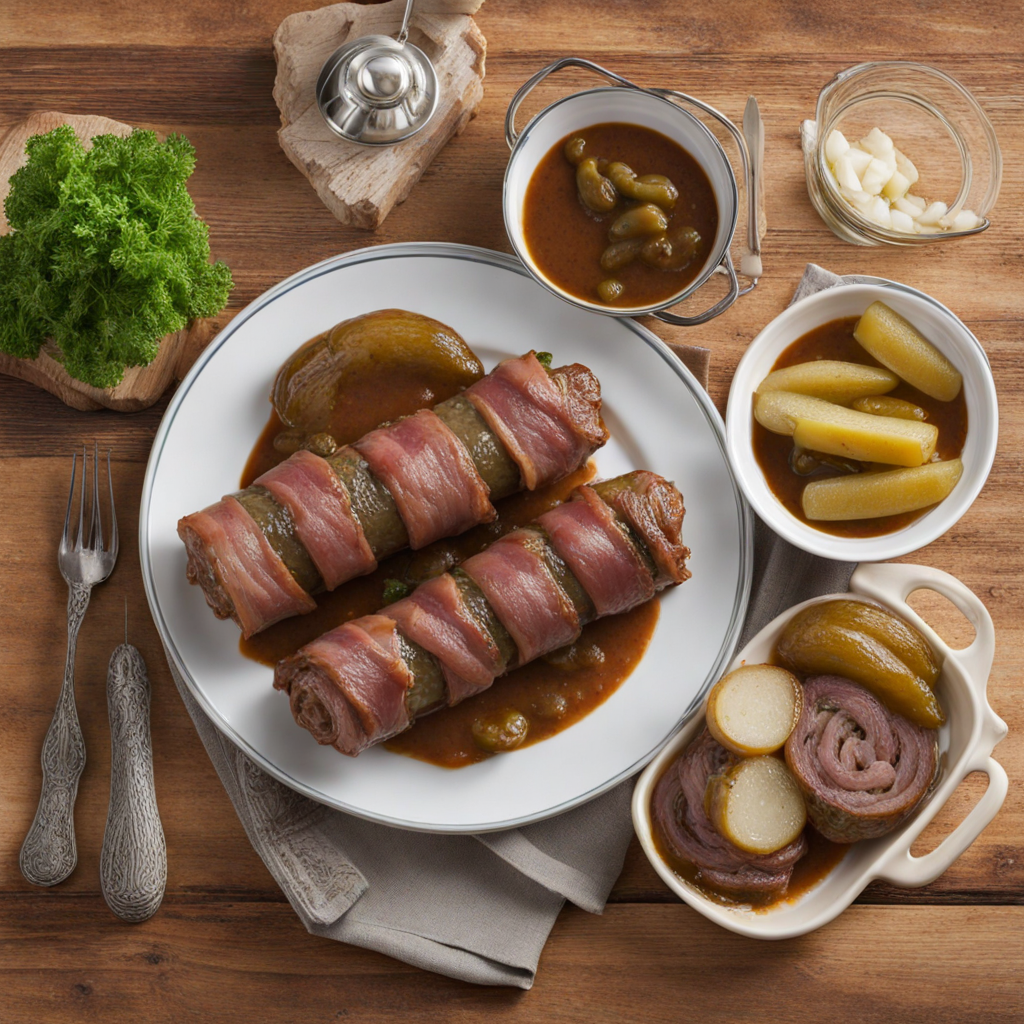Fischbrötchen
Fischbrötchen is a delightful German street food that showcases the country's coastal culinary heritage, particularly popular in regions like Hamburg and Schleswig-Holstein. This simple yet flavorful dish typically consists of a soft, fresh bread roll filled with various types of fish, such as herring, mackerel, or cod. The fish is often marinated or pickled, enhancing its natural flavors and giving it a tangy profile that beautifully complements the tender bun. Topped with crisp salad greens, onions, and sometimes a dollop of creamy sauce, each bite offers a satisfying mix of textures and tastes, making it a beloved snack or light meal for locals and visitors alike. The charm of Fischbrötchen lies in its versatility. While the classic version features marinated herring, you can also find variations that include grilled fish or even shrimp, allowing for a delightful twist on the traditional recipe. The bread roll, typically a buttered or unbuttered white bun, is the perfect vessel for the fish, as it absorbs the juices and flavors without becoming soggy. This dish is often enjoyed on-the-go, making it a popular choice for those exploring the bustling fish markets or enjoying a day at the beach. Fischbrötchen is not just a meal; it’s an experience steeped in German maritime culture. Eating this dish often evokes memories of seaside adventures, with the salty sea breeze and vibrant atmosphere enhancing its enjoyment. Whether you're a seafood enthusiast or a curious foodie looking to explore new tastes, Fischbrötchen promises a unique combination of flavors that reflect the essence of Germany's culinary landscape, inviting you to savor the freshness of the ocean in each bite.
How It Became This Dish
The History of Fischbrötchen: Germany’s Beloved Fish Sandwich Fischbrötchen, a simple yet flavorful fish sandwich, has become a culinary icon in Northern Germany, particularly along the coasts of the North Sea and the Baltic Sea. This humble dish, typically made with a fresh fish fillet, often herring, mackerel, or cod, is served on a bread roll and often garnished with onions, pickles, or a tangy remoulade. Its story is woven into the fabric of Germany's maritime culture, reflecting both the bounty of the sea and the traditions of the people who have depended on it for centuries. #### Origins: A Maritime Tradition The roots of Fischbrötchen can be traced back to the fishing communities of Northern Germany, where the proximity to the sea has shaped local diets for centuries. Historically, fish has been a staple in the diets of coastal populations, providing essential nutrients and serving as a vital source of protein. The development of this dish can be linked to the larger tradition of street food in Germany, where quick, portable meals catered to the needs of fishermen, merchants, and laborers. The earliest iterations of Fischbrötchen likely emerged during the Middle Ages when fish preservation techniques—such as salting, smoking, and pickling—became more widespread. Herring, in particular, was abundant in the North Sea and was often prepared in various ways. As urban centers grew, the need for convenient and affordable food options led to the evolution of portable dishes like Fischbrötchen. Fishermen would sell their catch directly to consumers, leading to the rise of small fish stalls and markets where fresh fish could be enjoyed on the go. #### Cultural Significance: More Than Just a Sandwich Fischbrötchen is not merely a meal; it is a cultural emblem of Northern Germany. It represents the region's identity, its connection to the sea, and the way of life for its coastal inhabitants. While it has become popular among locals, Fischbrötchen has also attracted tourists who flock to seaside towns for a taste of authentic German maritime cuisine. The dish is particularly popular in cities like Hamburg, Lübeck, and Kiel, where fish stalls and restaurants serve it in various forms. The preparation and consumption of Fischbrötchen often coincide with local festivals and events, such as the annual Herring Festival in Hamburg, celebrating the arrival of the herring catch each spring. At such gatherings, the sandwich takes center stage, and its diverse variations showcase the creativity of local cooks. Moreover, Fischbrötchen is emblematic of the "Norddeutsch" (North German) way of life, emphasizing simplicity, freshness, and the importance of local ingredients. It has become a symbol of regional pride, celebrated for its straightforward, no-frills approach that highlights the quality of the fish rather than masking it with elaborate sauces or garnishes. #### Development Over Time: From Street Food to Gourmet Delight As the years progressed, Fischbrötchen evolved from a simple street food into a versatile dish that reflects changing culinary trends. Initially, the sandwich was primarily composed of fried or smoked fish served on a basic bread roll. However, as culinary influences from other regions and countries began to permeate German cuisine, Fischbrötchen adapted and diversified. In the late 20th century, globalization and the rise of food culture saw an increased interest in gourmet interpretations of traditional dishes. Chefs began to experiment with Fischbrötchen, incorporating different types of fish, artisanal bread, and innovative toppings to elevate the sandwich beyond its humble origins. This transformation was not merely about aesthetics or flavor; it was also a response to growing concerns about sustainability and the health benefits of consuming fish. Today, it’s not uncommon to find Fischbrötchen made from sustainable fish options, with a focus on eco-friendly sourcing practices. Many establishments emphasize the use of local ingredients, supporting regional fisheries and promoting sustainable practices in the seafood industry. The traditional Fischbrötchen has thus become a vehicle for raising awareness about sustainability and the importance of responsible consumption. #### Contemporary Enjoyment: A Dish for All Occasions In modern Germany, Fischbrötchen can be found in various settings, from bustling fish markets and seaside kiosks to upscale restaurants and gourmet food festivals. It remains a favorite among locals and tourists alike, often enjoyed during a leisurely stroll along the beach or as a quick lunch between sightseeing excursions. The sandwich’s adaptability is part of its charm; it can be customized to suit individual tastes. Some prefer the classic version with pickled herring and raw onions, while others opt for grilled mackerel with a zesty remoulade. Vegetarian variations have even emerged, substituting fish with marinated vegetables or plant-based alternatives, catering to the growing demand for vegetarian and vegan options. #### Conclusion: A Culinary Legacy Fischbrötchen is more than just a fish sandwich; it is a culinary legacy that tells the story of Northern Germany's maritime culture, its people's resilience, and their unwavering connection to the sea. From its humble beginnings as a street food staple to its rise as a beloved dish that champions sustainability and local ingredients, Fischbrötchen reflects the evolution of German cuisine and the enduring spirit of its coastal communities. As life continues to change, so too will Fischbrötchen, evolving with the times while remaining an integral part of the cultural and culinary landscape of Northern Germany. Whether served at a seaside kiosk or a high-end restaurant, the essence of Fischbrötchen remains the same: a celebration of fresh, flavorful fish and the traditions that bind the people to their land and sea.
You may like
Discover local flavors from Germany







